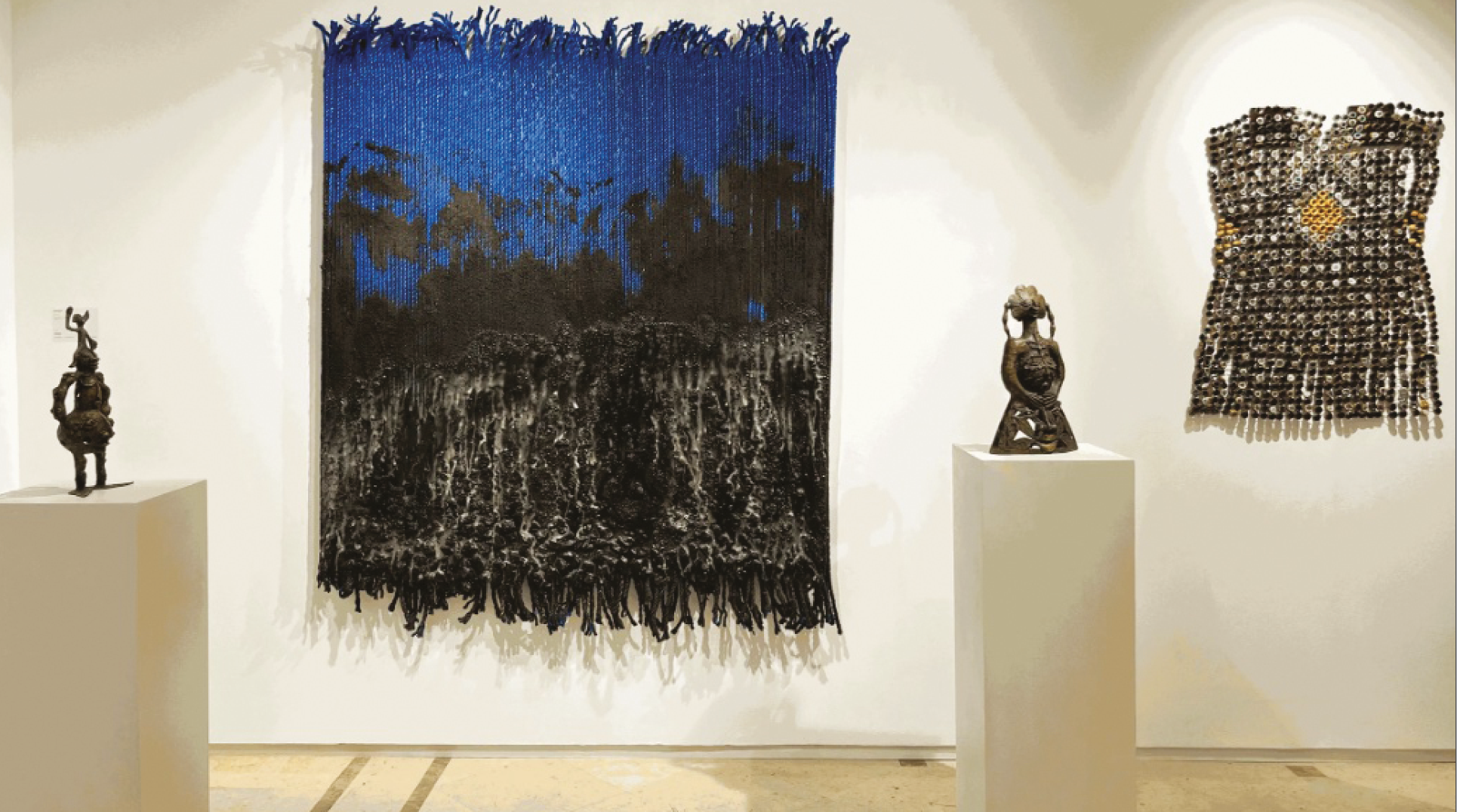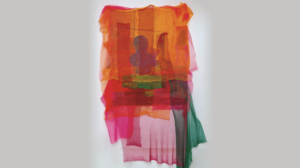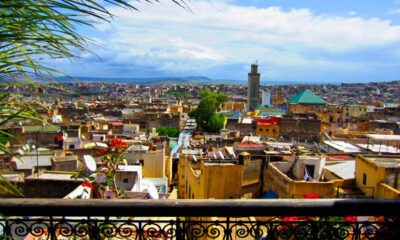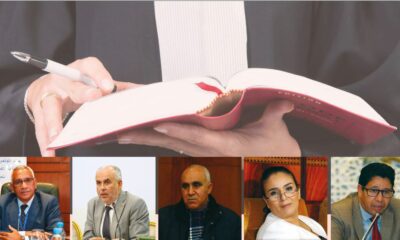Influences
African Art Creates Its Own Success
Is the African art market doing well? What role does the Moroccan scene play in this rapidly expanding ecosystem? A glimpse through the value of certain artists featured at the recent 1-54 Fair.

Held in late January, the 1-54 Fair once again proved to be an essential event for galleries and collectors worldwide. “This sixth edition was particularly remarkable for its diversity and the richness of its participants.
With over 30 exhibitors from 14 countries, including 10 Moroccan galleries, the Fair has solidified Marrakech as a major cultural hub in Africa.
The participation of international galleries, such as Space Un from Tokyo and Hunna Art from Kuwait, enriched the event by bringing new perspectives,” notes Nadia Ammor, associate director of L’Atelier 21. This balance is especially significant since 1-54 has always aimed to offer a unified vision of African art.
“My participation in 1-54 aimed to expand the gallery’s reach to an international market and provide increased visibility for the artists I represent. Today, when African art is mentioned, especially in Western and sometimes even Moroccan mindsets, the focus is often on sub-Saharan Africa.
However, Morocco is fully African, and its artists should be recognized as such,” emphasizes Abla Ababou, owner of the eponymous gallery.
Vitality
“The Moroccan art scene took center stage during this edition, with 10 participating Moroccan galleries highlighting the creativity and dynamism of local artists.
This increased their visibility and solidified Morocco’s place in the contemporary African art market, establishing Marrakech as a key player on the international cultural scene (…) This edition of 1-54 clearly demonstrated the flourishing health of the African art market and Morocco’s central role in this dynamic,” insists Ammor.
This edition of the 1-54 Marrakech Fair once again underscored the vitality of the Moroccan art market, whose momentum continues to grow. “The Moroccan market is increasingly asserting itself on the African scene, driven by talented artists gaining recognition and making their mark in prestigious institutions. Take Fatiha Zemmouri, currently exhibited at the Guggenheim Abu Dhabi.
This recognition marks a true turning point: Moroccan artists today stand out for their professionalism and the quality of their work,” notes Ababou.
Even a quick look at some of the stands of Moroccan galleries at La Mamounia and DaDa would capture the excitement animating the art scene, with the prices confirming the market’s vitality.
Kendell Geers, a South African artist whose work explores identity and social violence, sees his pieces negotiated at around 380,000 DH. Fihr Kettani, one of the hosts at Galerie 38 (Casablanca), who also showcased Younes Khourassani, Yacout Hamdouch, Ghizlane Agzenaï, Mohamed Hamidi, and Meriem Benkirane, is also pleased with the growing interest in the Moroccan scene, which he believes “continues to assert itself with captivating and thought-provoking works.
We have allowed these artists to be discovered by an international audience, which is essential for their careers.”
He adds, “The market is booming, and sales have generally met our expectations. This reflects a growing interest in African art, both locally and internationally.”
Bold choices
So Art Gallery (Casablanca) took a bold approach with a selection featuring Aidan Marak, Ange Dakouo, and Adjei Tawiah. Tawiah, known for using nylon sponges to give a unique texture to his compositions, has seen his works sell for around 250,000 DH.
“The contemporary African art market continues to thrive, supported by initiatives like the reopening of the Al Maaden Museum of Contemporary African Art (MACAAL) in Marrakech. This dynamic was reflected in very satisfying sales during this edition.
The growing interest from collectors, both local and international, in the presented works, indicates the increasing recognition of African artists,” notes Nadia Ammor, associate director of L’Atelier 21.
“The five artists we showcased (Najia Mehadji, Safaa Erruas, Margaux Derhy, M’barek Bouchchichi, and Mallick Welli) were very successful,” she adds.
This recognition is particularly seen in the value of Bouhchichi’s works, which explore identity and the invisibility of black bodies, negotiated between 93,000 and 155,500 DH.
Meanwhile, Abla Ababou Galerie (Rabat) highlighted Hakim Benchekroun, Ilias Selfati, and Fatiha Zemmouri. Acquiring a piece by Benchekroun, whose work captures the melancholy of abandoned colonial architecture, costs around 45,000 DH.
“I wanted to move away from the expectations often projected onto Moroccan art,” emphasizes Ababou. “It’s not about catering to an exoticizing Western gaze but showcasing contemporary creation rooted in its time.”
Moreover, among the most established Moroccan galleries, Loft Art Gallery (Casablanca) chose to feature an exclusively Moroccan lineup. “We are thrilled with the reception our stand received this year. Sales were excellent. Alongside Amina Agueznay’s works, we presented Bouchra Boudoua, Nassim Azarzar, and Samy Snoussi for the first time at 1-54, a bold move that proved to be a great success. The fair perfectly met our expectations by attracting an international audience to Morocco,” says Yasmine Berrada, co-founder of Loft Art Gallery. Exploring the motifs and ornaments of Moroccan transport trucks, Nassim Azarzar saw his works offered at 50,000 DH.
Allies
While Morocco had a prominent presence, galleries from the rest of the continent also shone. Le Violon Bleu Gallery, located in Sidi Bou Saïd (Tunis), dedicated a stand to Maghreb modernists with figures like Aly Ben Salem, Farid Belkahia, Hassan El Glaoui, and Chaïbia Talal. A gouache by Aly Ben Salem was estimated at 207,000 DH.
Galerie Farah Fakhri (Abidjan, Côte d’Ivoire) showcased Collin Sekajugo, Charles-David Gnangoran, and Tahar Jaoui, with Jaoui’s paintings selling between 114,000 and 145,000 DH. Galerie 1957 (Accra, Ghana/London) featured a collective exhibition including works by Kelvin Haizel, priced at 110,000 DH.
The fair was not limited to African gallerists: several galleries from Europe, Asia, and the Americas enhanced the exchanges. Loeve&Co (Paris, France) highlighted Roland Dorcély, a Haitian painter whose works were negotiated between 207,000 and 310,000 DH.
“We presented three modern artists at the 1-54 Marrakech Fair: Haitian Roland Dorcély, Frenchman Alex Burke, and Congolese Marcel Gotène, and we are overall very satisfied with the commercial and critical feedback from our participation,” notes Nicolas Nivelet, Gallery Manager, Art Fairs, Sales at Galerie Loeve&Co.
Galerie 208 (Paris, France) featured Mahi Binebine, eL Seed, and Armand Boua, whose pieces sold for 186,500 DH, while Space Un (Tokyo, Japan) dedicated a solo show to Aliou Diack, with his canvases exchanged for 165,500 DH.
“This edition perfectly illustrates the vibrancy of the African art scene. The interactions between artists, gallerists, and collectors were rich and promising,” says Kettani.
While the fair remains an artistic meeting space, it is also where the future of the African art market is shaped. “Seeing so many art world players come together to highlight African artists is a strong signal. It reflects a real momentum and a collective effort to affirm Morocco’s place on the African art map,” concludes Ababou. African art is undoubtedly making its mark. The question remains at what price.














